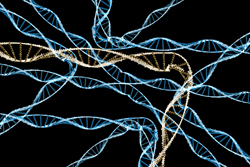Nucleic acid analysis revolution
'Revolutionary approaches and devices for nucleic acid analysis' (READNA) is a project boasting a multidisciplinary consortium of researchers from 12 academic institutions, and 6 companies. Researchers have made considerable progress leading to 20 patent applications and over 100 publications. Scientists have standardised state-of-the art next-generation sequencing (NGS) methods such as the MegaPlex PCR. Multiplex polymerase chain reactions (PCRs) enable the study of genes of interest and genomic variability. READNA members developed an array format for genotyping using the dynamic allele-specific hybridisation (DASH) technique. A simple re-sequencing protocol for ribo-PCR mass spectrometry (MS) was established along with an economical, high-resolution human leukocyte antigen (HLA)-typing protocol. Significant progress was made in developing third-generation sequencing techniques using chemical ligation methods and fluorescence resonance energy transfer (FRET)-based systems for DNA analysis. Microfluidic chips were optimised to analyse ultra-long genomic DNA fragments that were extracted from single cells and chromosomes using several different techniques. READNA members successfully developed methods to map megabase lengths of DNA by comparing them to in silico maps based on reference genomes. To obtain genomic context, the mapped DNA was extracted and amplified, followed by NGS and fluorescent in situ hybridisation (FISH) to reconcile genome organisation levels. To detect and measure all four nucleotides as individual bases in DNA, the team developed novel protein nanopore DNA sequencing techniques. . The potential for high-throughput analysis of RNA and DNA is close to realisation with the creation of large stable arrays of protein-based nanopores. Nanopore measurements have successfully detected DNA methylation changes as well as RNA base modifications. Researchers successfully reached proof-of-concept stage for the in situ sequencing of nucleic acid molecules in cells and tissues (histology sections).This proximity ligation assay (PLA) technique is now available commercially for localised mutation detection in histology sections. Research outcomes have been disseminated via the project website(opens in new window) and a brochure, as well as workshops, scientific publications and conference presentations. The techniques developed here could not only optimise health care and help personalise medicine, they could also find application in other sectors such as agriculture and biotechnology.







